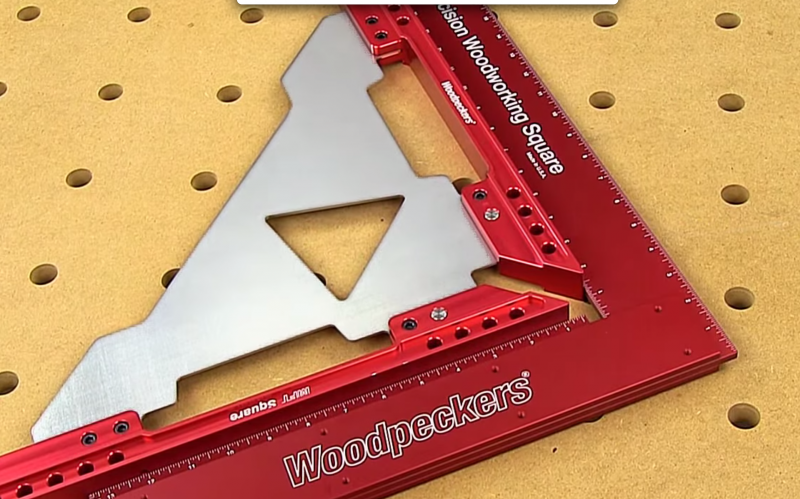@all - I had posted this in the other topic found here:
http://festoolownersgroup.com/other-tools-accessories/woodpecker-mft-square-modification/
"I helped in the design of the MFT Square from Woodpeckers and would love to join in and answer some questions and hear your feedback. Reading through, all of your posts are valid and I hope to address most of them, as many of these thoughts were considered during our design and prototyping process of the Woodpecker MFT Square.
A little about the design behind the Square; it was inspired by the need for a large thick webbed square to ensure the guide rail is 90 degrees perpendicular to the back fence. The approach to exclude the use of the holes as a feature in squaring up the rails is due to the inability to adjust such fixed and uncontrollable features. When features are fixed, you are subjected to rely on the integrity of their perpendicularity and the MFT holes integrity are affected through realistic factors such as true position of MDF holes, age, heavy use and atmospheric conditions. These factors were key in us deciding to exclude the use of the MFT holes as a squaring feature as we could not guarantee or control the true 90 degree perpendicularity to our standards.
However, the option to square up the holes to the tracks as best as possible, still exist with the use of the MFT Square and the QWAS dogs. See photos below. This free moving option allows for infinite positions compared to the option of including holes for QWAS dogs or integrated/removable dogs in the legs or stainless web of the square. If the square was to include holes for QWAS dogs or if the square was to have integrated/removable dogs in the legs or stainless web, it would limit the flexibility to move the tracks to multiple positions perpendicular to each other. For instance, if the square was fixed through dogs to the limited set grid positions of the MFT holes, you must then move the tracks to such positions. Having the free moving option allows you to slide the square in infinite increments along the dog generated edge allowing for maximum flexibility and setup positions.
Through the internal company expectations, we don’t bend on quality but certainly include flexibility. Every day we enjoy sitting down and figuring out on how to to offer better tools above our competition. The MFT square is hefty and it is a beast. I think it’s just one of those tools you have to pick up to feel the quality (ok …that part may be biased, but in all honesty, the reaction from external customers shared the same feeling). I hope I addressed most of the concerns and suggestions and I’d love to hear any feedback!
Thanks
Mike Koury
designer and mechanical engineer
Woodpeckers, INC.
..."
That thread has a lot of the same comments and answers to them, thought it might help visiting.
Thanks






